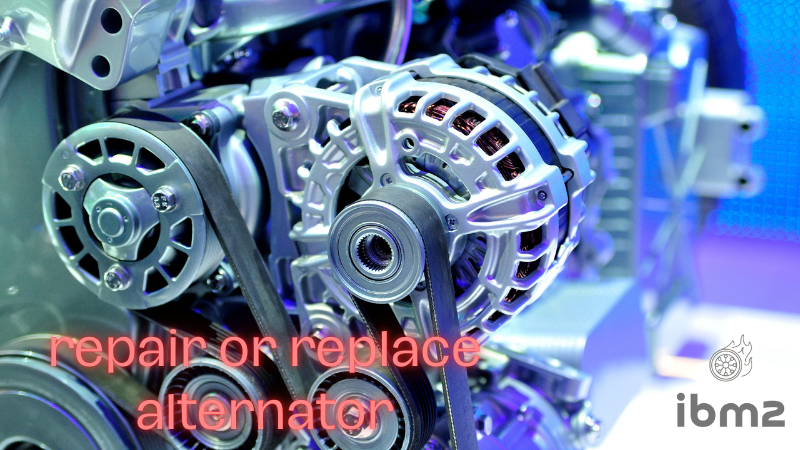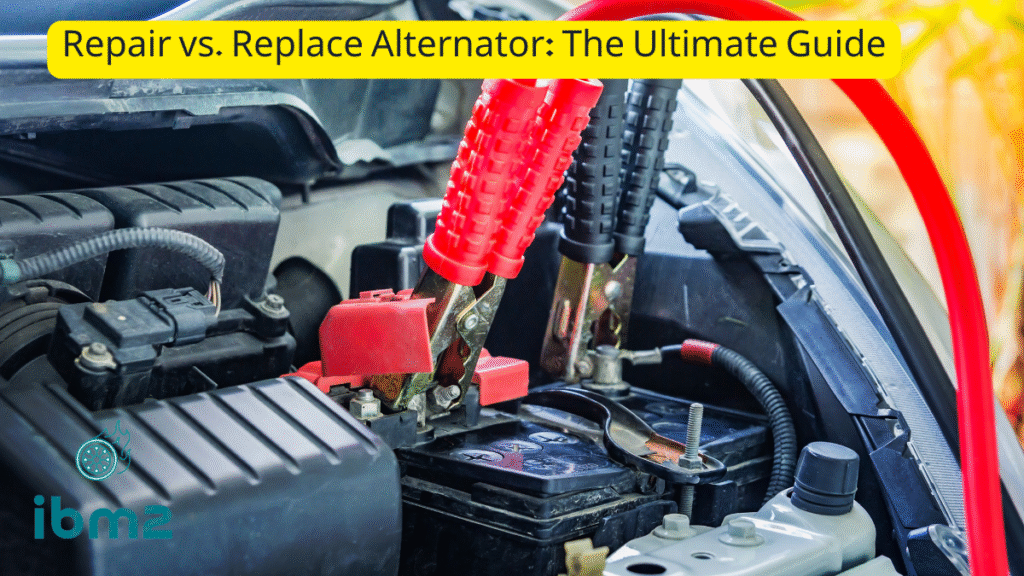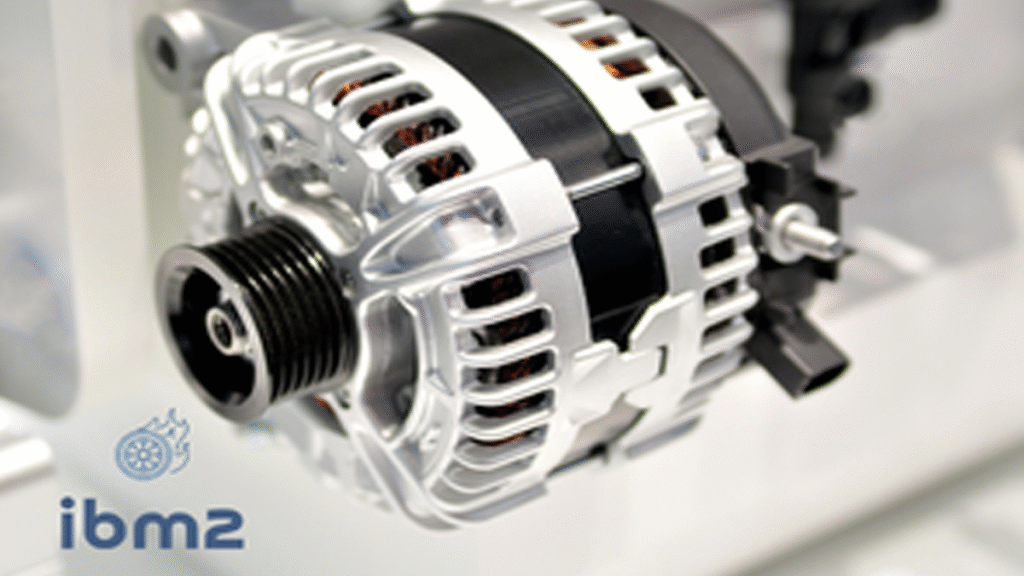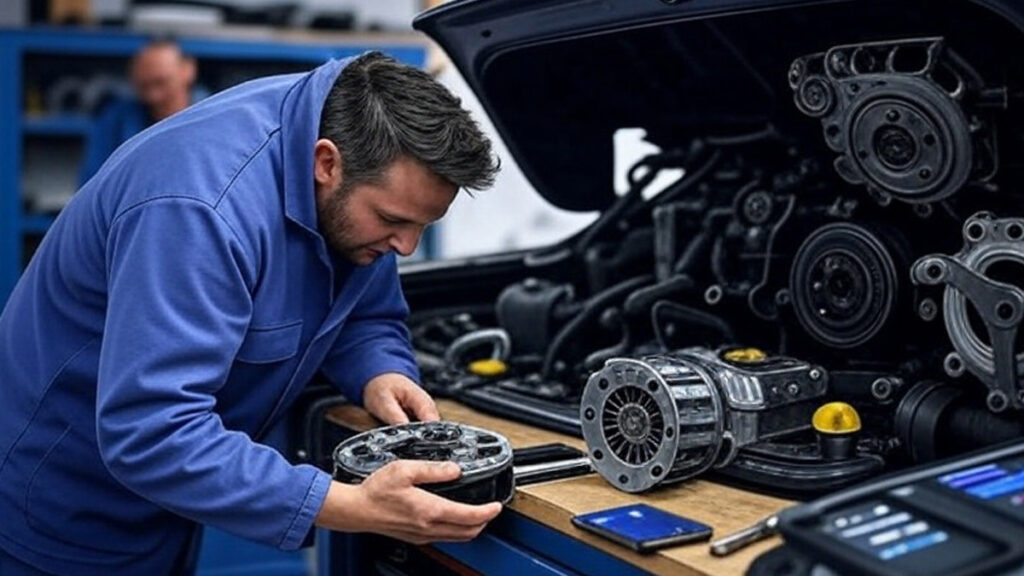Introduction: The Heart of Your Car’s Electrical System
You turn the key, and instead of the familiar purr of your engine, you’re greeted by a dreaded clicking noise. A lit-up battery icon on your dash confirms your fears: a charging system problem. Now, you’re faced with a critical and costly dilemma: should you repair or replace your alternator? This guide will cut through the confusion and give you the definitive answer, helping you make the smartest choice for your car and your wallet.
Faced with a failing alternator, every car owner is confronted with a critical dilemma: Should I repair it or replace it entirely? This isn’t just a technical question; it’s a financial one. A full replacement can cost hundreds of dollars, while a repair might be a fraction of the price. But making the wrong choice can lead to a breakdown and even more expense down the road.
This comprehensive guide will walk you through the signs of a bad alternator, the key differences between repair and replacement, and the crucial factors that will help you make the most informed—and cost-effective—decision for your vehicle.
Chapter 1: Understanding Your Alternator’s Job
Before we dive into repairs, let’s understand what we’re dealing with. The alternator is a critical component under your hood with one primary job: to generate electricity.
While your battery provides the initial jolt of power to start your car, the alternator takes over once the engine is running. It’s responsible for:
- Powering all electrical components (lights, radio, AC, windshield wipers, etc.).
- Charging the battery while you drive, ensuring it has enough power for the next start.
A failing alternator means your car is running solely on battery power. Once that battery is drained, your car will shut down—often at the most inconvenient time possible.

Chapter 2: The Tell-Tale Signs of a Failing Alternator
How do you know it’s the alternator and not just the battery? Look for these common symptoms:
- Warning Lights: The most obvious sign is the battery or ALT warning light on your dashboard.
- Dim or Flickering Lights: Headlights and interior lights that dim at idle but brighten when you rev the engine are a classic symptom.
- Electrical Gremlins: Power windows operating slowly, a stereo that resets, or erratic gauge behavior.
- Strange Noises: A failing alternator often has worn-out bearings. Listen for a grinding, whining, or growling sound from the front of the engine.
- Dead Battery: A repeatedly dead battery, especially a new one, almost always points to a charging system issue.
- Burning Smell: The smell of burning rubber or hot wires can indicate an overheated alternator due to an overworking belt or internal failure.
Pro Tip: A simple test is to start your car and then disconnect the negative battery terminal. If the car dies immediately, your alternator is almost certainly not charging.
Chapter 3: The Case for Repair: When It Makes Perfect Sense
Many people jump straight to a full replacement, but in specific scenarios, a repair is not only possible but highly recommended.
What Parts Can Actually Be Repaired?
An alternator is not a single sealed unit. It comprises several components that can be serviced individually:
- Voltage Regulator: This is the brain of the alternator, controlling the power output. It’s a common point of failure and is often a simple and inexpensive fix.
- Rectifier Assembly (Diodes): This component converts the alternator’s AC output to DC for the battery. A single bad diode can cause undercharging.
- Brushes and Bearings: These are wear-and-tear items. Brushes are small carbon blocks that transfer current to the spinning rotor and wear down over time. Bearings allow the rotor to spin smoothly; when they fail, they cause the tell-tale grinding noise.
- Pulley and Clutch: The pulley can seize or the one-way clutch can fail, leading to belt squeal and charging issues.
When is Repairing the Best Option?
- The Alternator is High-Quality (OEM): If your car has a high-end or original equipment manufacturer (OEM) alternator, a repair can save you from buying a costly new OEM unit.
- Simple, Diagnosed Fault: If a mechanic has pinpointed the issue to a specific, replaceable part like the voltage regulator or brushes, a repair is the logical choice.
- Age of the Vehicle: If the car is older but otherwise in good condition, and the alternator itself is not ancient, a repair can extend its life economically.
- Cost-Savings: A repair can be 50-70% cheaper than a full replacement, especially if you can find a skilled auto-electric shop.
Chapter 4: The Case for Replacement: When It’s the Only Safe Choice
Sometimes, a repair is just putting a band-aid on a deeper problem. Here’s when you should insist on a replacement.
When is Replacing the Only Option?
- Severe Internal Damage: If the stator or rotor (the core copper-wound components) are burned out, damaged, or shorted, the cost to repair them often exceeds the price of a new/remanufactured unit.
- Widespread Wear: If multiple components are failing or the alternator housing is damaged, a repair is not cost-effective.
- Age and Mileage: If the alternator has over 150,000 miles on it and is failing, other internal parts are likely near the end of their life. Replacing the worn-out brushes might not prevent the bearings from failing six months later.
- Lack of Parts: For some older or obscure models, finding individual repair parts can be impossible, making a complete unit the only available option.
- Warranty and Reliability: A new or quality remanufactured alternator almost always comes with a strong warranty (e.g., 1-3 years). A repair might only have a 90-day warranty on the specific part replaced.
- Peace of Mind: If you rely on your car for daily commuting or long trips, a new unit offers maximum reliability and eliminates the worry of another failure.
Chapter 5: The Critical Factors in Your Decision Matrix
So, how do you decide? Ask yourself and your mechanic these questions:
| Factor | Favors REPAIR | Favors REPLACEMENT |
|---|---|---|
| Diagnosis | Specific, simple fault (e.g., regulator, brushes) | General failure, burnt windings, multiple issues |
| Cost Estimate | Repair quote is significantly lower (e.g., <50% of replacement) | Repair quote is close to the cost of a new unit |
| Vehicle Age/Value | Older car with lower overall value | Newer car you plan to keep for a long time |
| Alternator Type | High-quality, expensive OEM unit | Standard unit where remanufactured ones are cheap |
| Your Needs | You need a budget fix and are willing to accept some risk | You need maximum reliability and peace of mind for years |
Chapter 6: The Cost Breakdown – What to Expect
- Repair Cost: Repairing a specific component (e.g., voltage regulator) can range from $100 – $300 for parts and labor at an independent shop.
- Replacement Cost: A full alternator replacement typically costs between $400 – $1,000+, depending on your car’s make and model. This includes:
- Parts: A new, OEM, or remanufactured alternator ($150 – $600+).
- Labor: 1-2 hours of labor ($100 – $250 per hour at a dealership).
Always get a detailed estimate for both options before making a decision.
Conclusion: Making the Final Call-Repair vs. Replace Alternator
There is no one-size-fits-all answer to the “repair vs. replace” alternator debate. It’s a calculated decision based on diagnosis, cost, and your personal circumstances.
- For the DIY enthusiast with a simple toolset and a diagnosed bad voltage regulator, a repair is a fantastic, money-saving project.
- For the owner of a reliable daily driver, investing in a quality replacement unit is the best path to guaranteed performance and long-term peace of mind.
The most important step is to seek a professional diagnosis. A trustworthy mechanic or a specialized auto-electric shop can test your alternator’s output and open it up to give you a clear picture of what’s wrong. Armed with the knowledge from this guide, you can have a confident conversation with them and ensure you’re driving away with the right solution for your car and your wallet.




Pingback: Alternator Belt Replacement Cost: The 2025 Ultimate Guide to Saving Money - ibm2